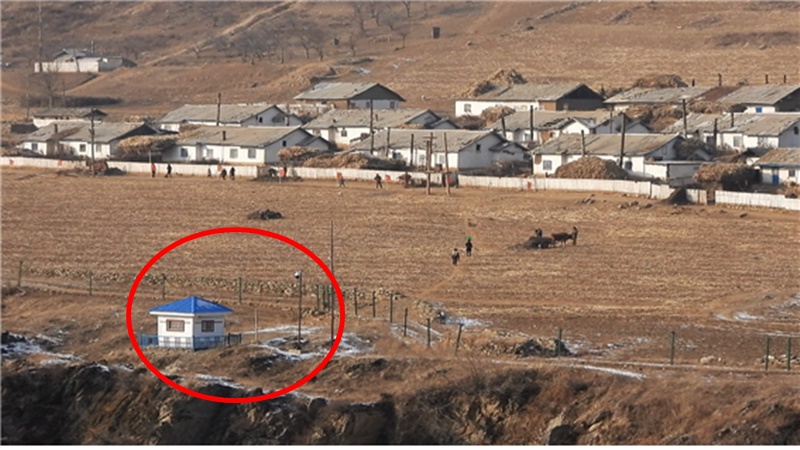
The installation of surveillance cameras along the Sino-North Korean border appears to have reached completion, according to recent reports from Daily NK.
The Chinese have erected barbed-wire fences along their side of the river over the some 1,700 kilometer stretch of land that borders North Korea. Although the area was already very high-security, now the North Korean side is also lined with metal fences and surveillance cameras.
After Kim Jong Un came to power, barbed-wire fences and surveillance cameras began to multiply along the rivers serving as the border between the two countries. The Yalu and Tumen rivers are important sources of water for North Korea, which generally has little or no access to water infrastructure. North Korean residents are only allowed to approach the water when the guards at checkpoints in the area permit them to do so. Surveillance cameras now watch their every movement.
A North Korea photo I took in January showed a country living in the past. It shows manure being transported on oxcarts and treadmills, and women drawing water from wells. It looks like something from a country village in South Korea during the 1960s and 1970s, although the checkpoint located nearby is equipped with top-of-the-line surveillance cameras.
It shows that civilization and savagery can exist in one place in the 21st century. The Korean word for “grain milling” is so uncommon these days that we have to look it up in the dictionary. If we claim that the quiet farm village life is a “beautiful scene,” we are doing a disservice to the people of North Korea. There’s no reason for anyone to live this way. Freedom and happiness is being suppressed in North Korea because of an authoritarian leader.
What is also surprising are the firing targets placed on the barbed-wire fences. These firing targets, which look like a person with their arms and feet tied up to a pole, are for soldiers’ target practice. These targets have been placed on fences where ordinary North Koreans walk by as a warning and a symbol of oppression.

To improve the lives of its people, the North Korean regime has announced an emphasis on the mantras: “Pulling ourselves up with our own bootstraps is the only way to survive” and “Let’s live in accordance with our own way”. At the Second National Party Elementary Propaganda Worker Rally held recently, Kim Jong Un said “The Suryong (Kim Il Sung) and General (Kim Jong Il)’s lifelong hope was for everyone to eat white rice with meat soup and wear clothes and live in nice houses.” In an era of the Fourth Industrial Revolution, North Korea is still struggling to provide its people with rice and meat soup.
North Korea emphasizes economic development, but the freedom enjoyed by North Koreans is severely limited. At the recent US-DPRK summit in Hanoi, North Korean diplomats called for the lifting of sanctions that “hinder the civilian economy and the lives of the people”. It almost looked like the North Korean regime actually cared about such things. However, their statements were simply aimed at spreading propaganda abroad to blame international sanctions for the country’s woes.
Improvement in the lives of North Koreans will happen when the regime lifts its oppression and control over the people, not when international sanctions are lifted. People who are trapped, oppressed and prevented from living free lives are not happy people. What did Kim Jong Un see on his trip to and from Hanoi? The shortcut to improving the lives of his people and jumpstarting economic development is economic reforms, opening and improving human rights.
*Views expressed in Commentaries do not necessarily reflect those of Daily NK.




















